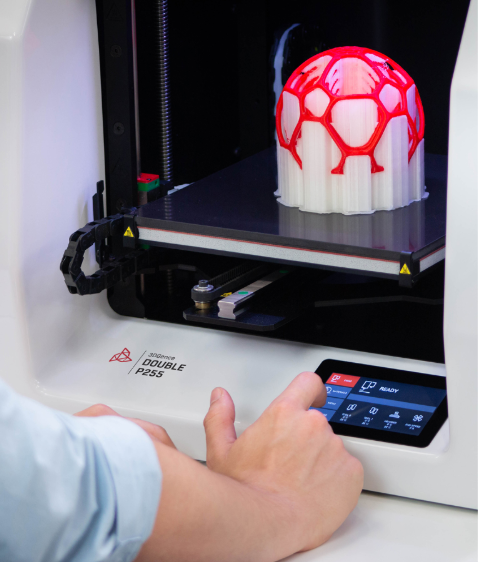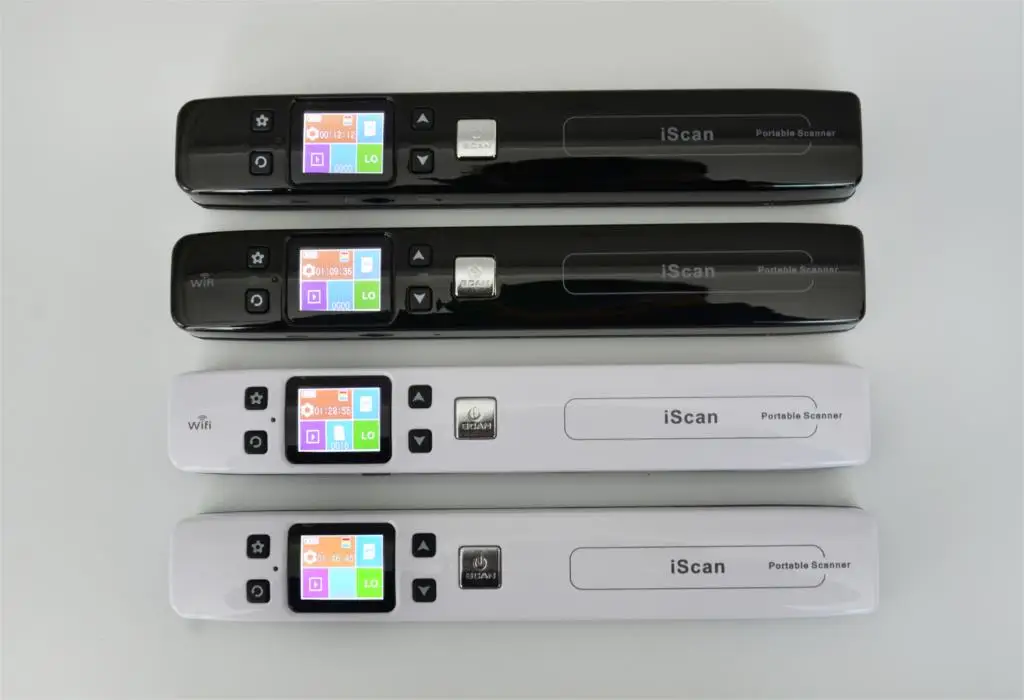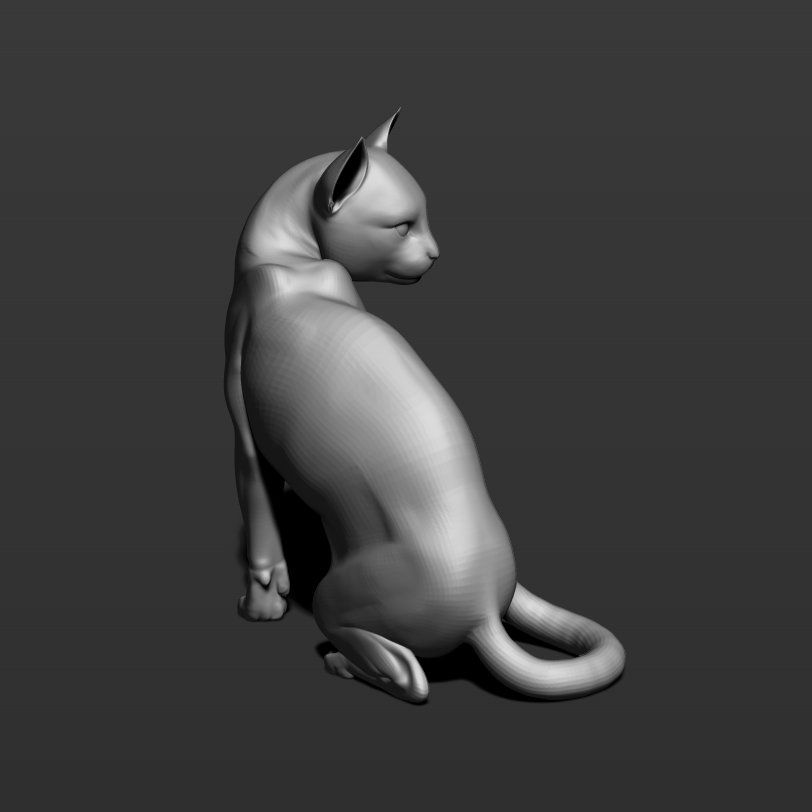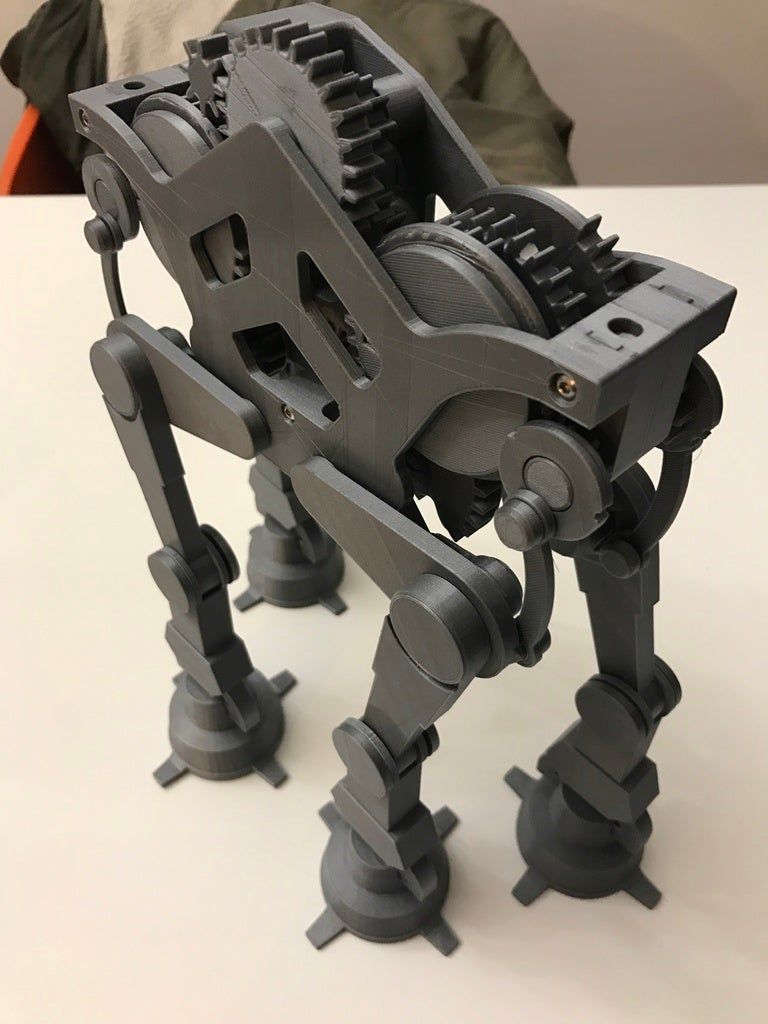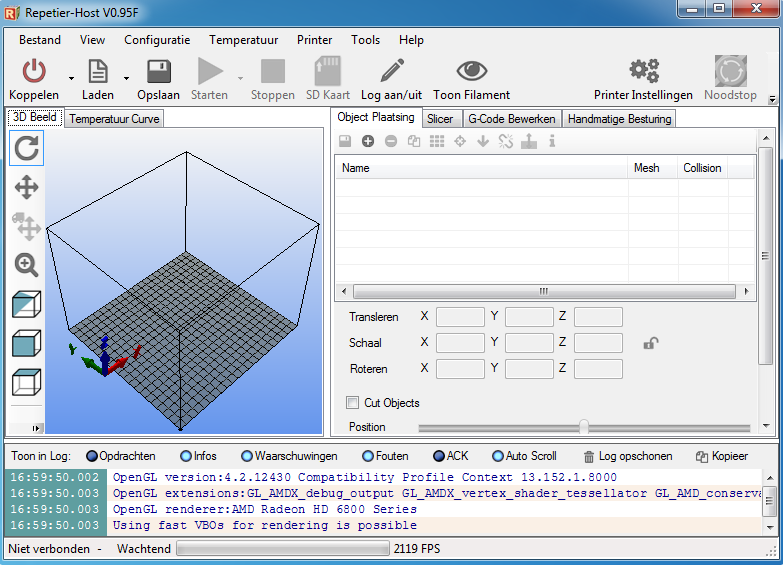Prometal 3d printer
EP-M150 Pro Metal 3D Printer
PLM Products & Brands
Introduction of EP-M150 Pro Metal 3D Printer
-
Adopts metal powder bed selective melting MPBF ™ ( Metal Powder Bed Fusion ) technology, single and dual-laser printing modes are optional, supporting 200 and 500W laser, which can be perfectly used for the rapid production of high performance, high-precision parts.
-
Compatible with most popular metal powder materials, including titanium alloy, aluminium alloy, nickel-based superalloy, maraging steel, stainless steel, cobalt, chromium alloy and etc.
-
Versatile applications such as industrial manufacturing, medical, education, dental, materials development and etc.
High Precision
High Performance
-
The density of printed parts can reach nearly 100%
-
Volatility of mechanical properties < 5%
-
In dual laser printing mode, precision deviation in alignment area ≤ 0.
15 mm
High Efficiency
-
The layer thickness can be up to 100 μm
-
With the latest upgraded technology combining dual-laser with large layer thickness mode, the productivity has been risen for 2.3 ~ 2.7 times.
Openness
-
High consistency, different machines could use the same set of process parameters.
-
Machine compatible with multiple materials, the same machine can print multiple materials without adjusting the optical path.
User Friendly Operation System
-
Ergonomics overall design for users.
-
With "one-click printing" function, each process is ready to run, click the "print" button on the screen to start printing.
-
The replacement or filter element, residual material tank substrate and recoater can be complete within 2 minutes.

Affordable Operation Cost
-
Air consumption during processing < 3L / min ( 0.3 MPa )
-
Powder supply is accurate, stable and controllable, and high utilization rate of powder
-
The existing material parameter packages are provided for free
Affordable Operation Cost
-
Safety design, anti-misoperation, anti-electric shock, fire prevention, anti-waste, anti-pollution
-
Real-time monitoring and traceable of working environment and gas source status, safe and reliable.
Need help with EP-M150 Pro Metal 3D Printer?
DTS is the authorized partner of Shining 3D in Singapore & Malaysia.
Speak to our representative!
With more than 15 years of experience in PLM solution, our consultants and engineers are equipped with great skills and knowledge and ready to help.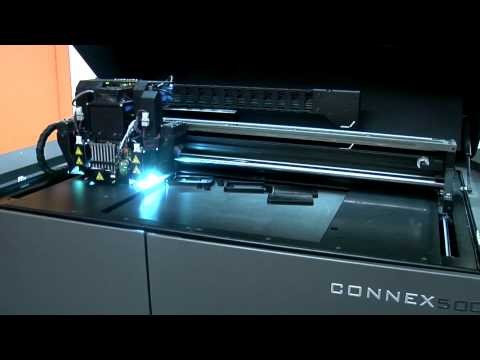
Contact DTS
- Explore more 3D Printer products by DTS
Digital Metal launches DMP/PRO Metal Binder Jet 3D Printer series
The Binder Jet 3D printer provider Digital Metal announced the launch of its new DMP/PRO binder jet system, developed as a modular component of a complete binder jet solution. The PRO architecture was developed from the ground up to be an industrial binder jet solution for high volume manufacturing with maximum reliability, accuracy and repeatability.
70,400 nozzles precisely deposit material, letting the system produce up to 1,000 cm3 of
parts per hour at 1600 dpi. This high productivity is combined with a robust platform, custom software and a fast material change powder magazine that minimizes downtimes. The DMP/PRO has been engineered for the precision production of metal binder jet components for industry, luxury goods, medical manufacturing and consumer products.
Digital Metal CEO Christian Lönne states,
As a team, we have previously gone from a single machine to a production machine, and now we’ve launched a true production platform. We’re moving away from the rest of the binder jet market towards tighter tolerances, higher volumes and higher precision. We’re heading towards a higher level of maturity. We do not just offer a machine in isolation. We have a true platform optimized to work in concert with debinding, sintering and post-processing equipment. This platform is modular, extensible and a stepping stone for Industrialization.
Azoth 3D General Manager Cody Cochran,
Digital Metal´s new machine speed, while keeping quality and reliability, is compelling. The PRO Series reduces the capital needed to scale and also reduces part costs through higher machine throughput. We want to run it round the clock, 7 days a week,
making thousands of parts daily. Azoth 3D wants to be the largest and best independent binder jet manufacturing company and this is the system we need to get us there.
The DMP/PRO comes equipped with linear motors, air bearings and a diabase stone
base are the foundation of stability process control. Robustly designed for now the
system is also modular, adaptable and future-proof. The current DMP/PRO systems can
be extended in future through inertization and automation modules. It is also completely
customizable, with remote monitoring, KPI monitoring and traceability.
Built on Siemens MindSphere cloud IoT OS the software system ensures that future IoT integration and connections will be reliable and secure. The system is intuitive and easy to use and optimized for production environments. New support structure minimization increases productivity and reduces part cost. Higher powder utilization means that now 100% of excess powder can be recycled. This environmental gain also reduces part costs.
Specifications
- Memjet page-wide print system
- 70,400 ink nozzles
- Machine footprint 2700 x 1000 x1700 mm (L x W x H)
- Build volume 250 × 217 × 70 mm
- Weight 2000 kg
- Typical productivity 500 – 1,000 cm3/h
- Changeover time between prints 15–25 min
(c) Picture & link: Digital Metal
3DPResso is a weekly newsletter that links to the most exciting global stories from the 3D printing and additive manufacturing industry.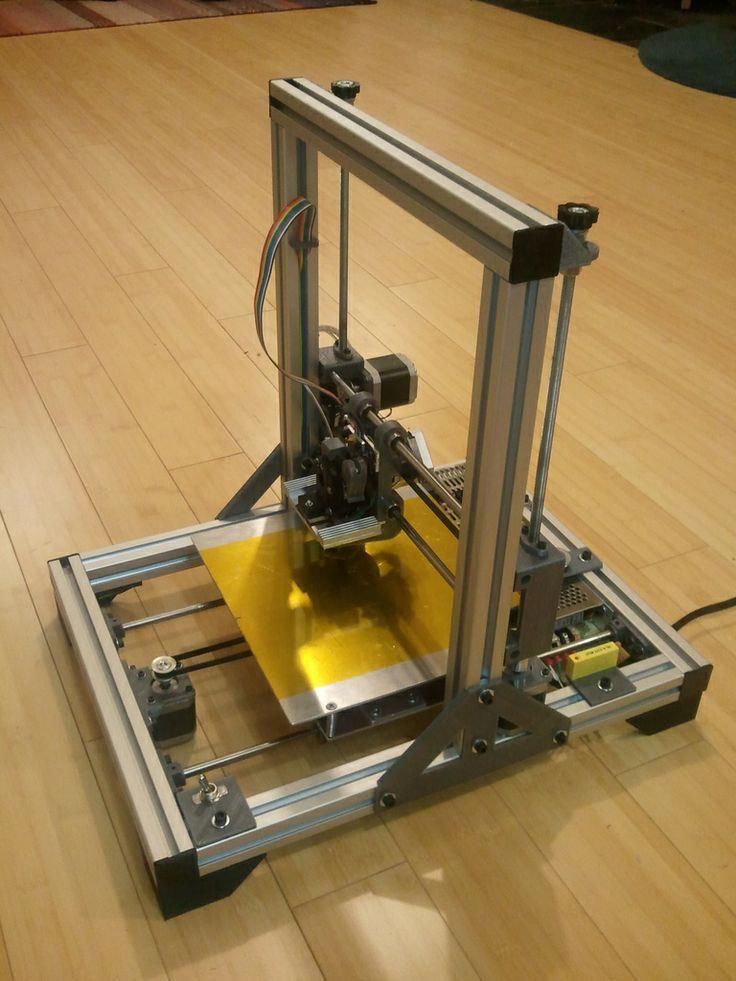
ExOne 3D printers. 3D printing with sand. Production of sand molds
When buying a 3D printer DISCOUNT on plastics and polymers up to 10%
There are 7 products
Sort:- Default
- Default
- Most popular
7 Prices: cheaper 9000 9000
Price on request
on order
Number
Number
In the favorites
Compare
Quick View
EXONE
3D EXONE M-FLEX
price 0 out of 5
(0 reviews)
On order
- Print technology - SLM
- Print material - Metal
- Print field - 400x250x250 mm
Price on request
on order
Number
Number
In the favorites
Compare
Quick View
EXONE
3D EXONE X1 160PRO
2 out of 5
(0 reviews)
On order
- Print technology - MIM
- Print material - Metal
- Print field - 800x500x400 mm
Price on request
on order
Number
Number
In the favorites
Compare
Quick View
EXONE
3D EXONE X1 25PRO
9000 9 out of 5
(0 reviews)
On order
- Print technology - MIM
- Print material - Metal
- Print field - 400x250x250 mm
Price on request
on order
Number
Number
In the favorites
Compare
Quick View
EXONE 9000 0 out of 5
(0 reviews)
Custom order
- Print technology - SBJ
- Print material - Sand
- Print field - 1800x1000x700 mm
Price on request
on order
Number
Number
In favorites
Compare
Quick View
EXONE 9000 0 out of 5
(0 reviews)
On order
- Printing technology - SBJ
- Printing material - Sand
- Printing area - 1800x1000x700 mm; 400H (With box-in-box system)
Price on request
on order
Number
Number
In the favorites
Compare
Quick View
EXONE
3D EXONE S-PRINT
price 9000 9000 0 out of 5
(0 reviews)
Custom order
- Print technology - SBJ
- Print material - Sand
- Print field - 800x500x400 mm
Price on request
On request
Quantity
Quantity
ExOne's history dates back to 1995 when Extrude Hone ProMetal was founded to develop metal 3D printers.
In 1998, Extrude Hone launched the world's first commercial inkjet metal 3D printing machine, developed at MIT, the ProMetal RTS-300. The system printed with a mixture of metal powder with a binder, which was subsequently melted in a high-temperature furnace and sintered the metal particles together. The first ProMetal RTS-300 system was installed at Motorola.
Read more…
In 2002, Extrude Hone launched a sand 3D printer for 3D printing molds for metal casting. This process is sometimes referred to as "indirect" 3D printing because the printed molds are used to create finished metal products by casting.
In 2013, the company was restructured and changed its name to ExOne Company, in addition, the firm completed a successful initial public offering on the Nasdaq in the same year.
By 2019, ExOne has launched more than 12 models of industrial 3D printers for printing with metals, sand, ceramics and composite materials. About half of the ExOne machines installed worldwide are used for 3D printing of molds for metal casting, the other half are used for direct 3D printing with metal, ceramics and composite materials.
Today ExOne is the undisputed world leader in the production and supply of additive systems using binder jetting inkjet technology. Hundreds of ExOne pieces of equipment have been installed in industrial plants, research centers, medical educational institutions for the production and development of finished products and test prototypes.
One of the main advantages of 3D printing on ExOne equipment is the ability to combine several metal parts into a single product, which is manufactured in one production cycle, previously, when manufacturing a similar product using traditional methods, it was necessary to produce several parts, which were then assembled into a single assembly by fastening, welding and other types of connection.
Metal 3D printing on Formnext 2017 / Sudo Null IT News0001
3D printed engineering filament parts can outcompete metal parts where their strength and temperature resistance are sufficient. We recently wrote about what plastics are used in industrial FDM printing and what technique for working with them was demonstrated at Formnext 2017. Today we will continue the theme of the exhibition, moving on to metal products.
Today we will continue the theme of the exhibition, moving on to metal products.
Powder sintering
Manufacturers of 3D printers and consumables are seriously interested in using raw materials originally designed for Metal Injection Molding, MIM. Fine metal powder with a small amount of thermoplastic binder is molded under pressure and then baked. Shrinkage in the process can exceed 10%, the real value is predictable and taken into account during production.
Instead of a press and molds, it is quite possible to use a 3D printer to obtain a blank in the first stage. There is no established name for the production technology yet: Desktop Metal has BMD, Bound Metal Deposition. Markforged has ADAM, Atomic Diffusion Additive Manufacturing. AIM3D calls it CEM, Composite Extrusion Modeling. Compared to MIM or SLM printing, the cost of equipment and a single end product can be significantly reduced.
Desktop Metal and Markforged
Markforged and Desktop Metal offer a combination of FDM printer, washer and oven. After printing, the part is cleaned from the outside of the plastic binder and sent to the oven, where it is processed in two stages - first, the remaining plastic is removed, and then the part is baked. Depending on the raw material, it is possible to use a gas atmosphere in the furnace, such as argon. The result is a part with a density of up to 99.7% for Markforged and up to 99.8% for Desktop Metal, this is about porosity.
After printing, the part is cleaned from the outside of the plastic binder and sent to the oven, where it is processed in two stages - first, the remaining plastic is removed, and then the part is baked. Depending on the raw material, it is possible to use a gas atmosphere in the furnace, such as argon. The result is a part with a density of up to 99.7% for Markforged and up to 99.8% for Desktop Metal, this is about porosity.
Markforged Metal X
- Working chamber: 250 x 220 x 200 mm.
- Layer thickness: from 50 µm.
- Accessories: Wash-1 cleaning station, Sinter-1 or Sinter-2 oven.
AIM3D
The company offers an ExAM 255 printer and an ExSO 90 oven. The printer does not work with filament or powder, but directly with MIM pellets. Otherwise, it is similar to a conventional FDM machine and can print with familiar plastics, also from granules - it is also cheaper than using a filament.
AIM3D ExAM 255
- Working chamber: 255 x 255 x 255 mm.
- Layer thickness: from 20 µm.
- Material supply: by means of a complete or external compressor.
BASF and Fraunhofer IFAM
BASF last year announced the Ultrafuse 316LX filament - it is not yet commercially available, it is in the process of testing. Apium and Gewo 3D have already announced that "it works". A rod familiar to FDM printers, but consisting of stainless steel powder with a plastic binder. The declared porosity of the part after baking is less than 2%. It is possible to print metal on a conventional 3D printer, all that remains is to find a suitable oven for baking. Fraunhofer IFAM demonstrates exactly this when it prints steel, titanium, copper and other metals and alloys with the Renkforce RF100 desktop printer for less than 300€.
Inkjet
To form a part that will be baked, it is not necessary to use FDM technology.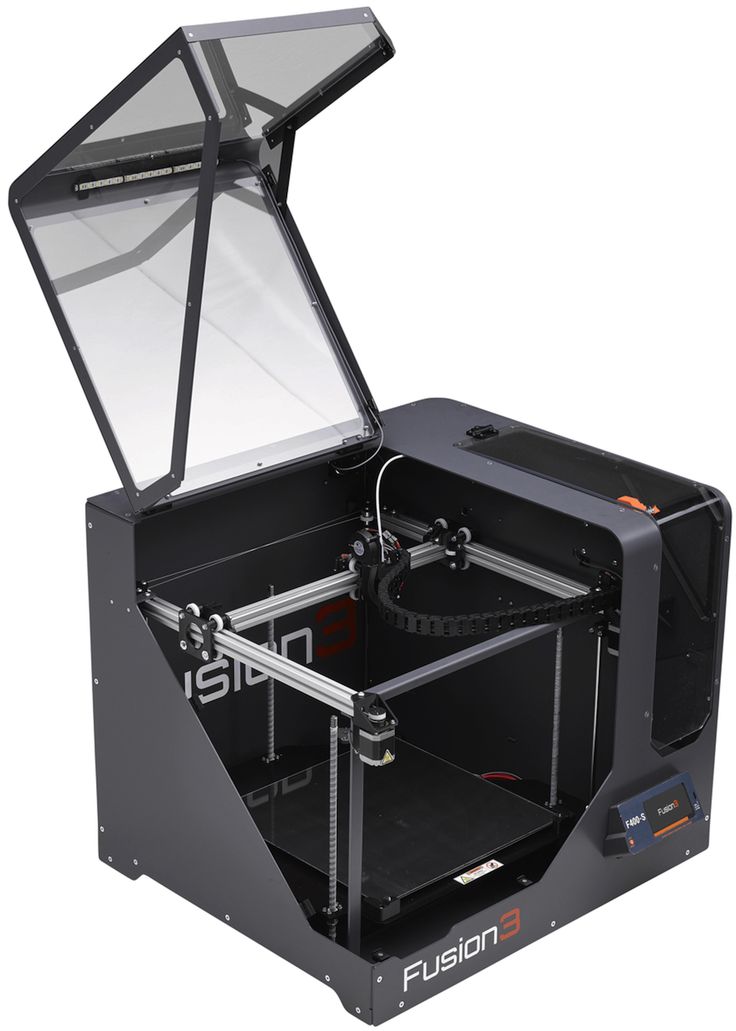 There are installations that work like gypsum polymer printers, only with different raw materials. Apply a layer of powder, fix in the right places with a liquid binder, repeat. The resulting parts are cleaned of excess metal powder and baked. With slight differences in implementation, this is how the Desktop Metal Production System, ExOne industrial printers, and Digital Metal DM P2500 setups work.
There are installations that work like gypsum polymer printers, only with different raw materials. Apply a layer of powder, fix in the right places with a liquid binder, repeat. The resulting parts are cleaned of excess metal powder and baked. With slight differences in implementation, this is how the Desktop Metal Production System, ExOne industrial printers, and Digital Metal DM P2500 setups work.
ExOne M-Flex
- Working chamber: 400 x 250 x 250 mm.
- Layer thickness: from 100 µm.
- Print speed: 30-60 seconds per layer.
Traditional technologies
Yes, you can already call them that. Selective laser sintering and selective laser melting. In the first case, the heating temperature of the metal powder layer is below the melting temperature, and particles are sintered. In the second, the powder is fully fused. In these areas, both giants and newcomers presented their products on Formnext.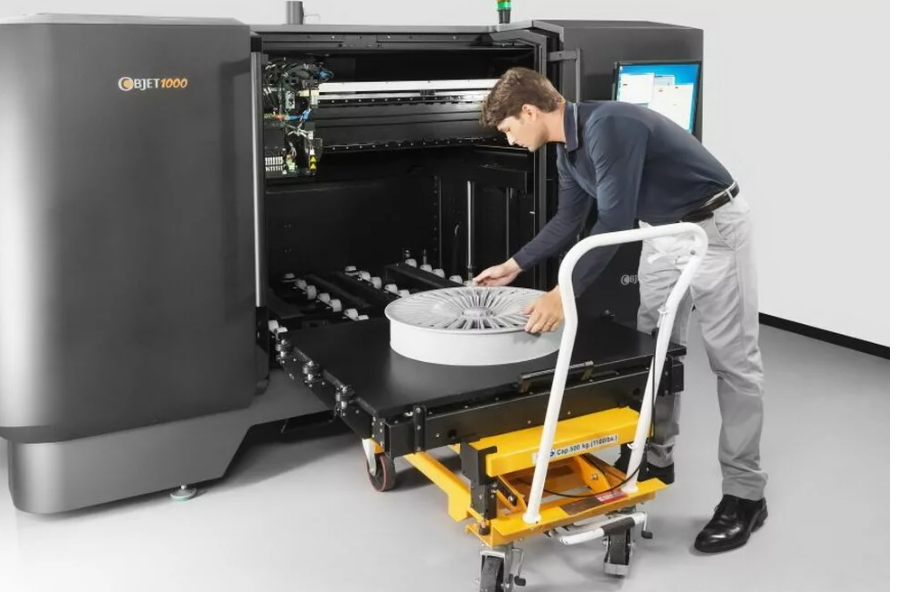
Concept Laser, part of GE, showed off a printer with a working area of 1.1 x 1.1 x 0.3 m. Called ATLAS, it operates with a kilowatt laser and is equipped with an integrated 3D scanner.
SLM Solutions showed the SLM 800, a machine with a 500 x 280 x 850 mm chamber. Up to four parallel lasers, 700 W each, plus the ability to automate the production chain - manual operations, from loading the powder to cleaning the finished part, are eliminated. A more modest unit, the SLM 280, has been upgraded to version 2.0 and is now equipped with one or two lasers up to 700 W, with a working chamber of 280 x 280 x 365 mm. It is optionally offered with an automatic powder feeder.
Trumpf announced that its TruPrint 5000 is the fastest machine among classmates. Its working area is a cylinder with a diameter of 300 mm and a height of 400 mm, three lasers, 500 W each. Plus, the automation of moving the “barrel” into the working area and from it to the cleaning station.
SLM Solutions SLM 280 2.0
- Working chamber: 280 x 280 x 365 mm.
- Layer thickness: from 20 µm.
- Wall thickness: from 150 µm.
Original solutions
OR Laser offers the ORLAS Creator, a relatively compact printer with a working area in the form of a cylinder with a diameter of 100 and a height of 110 mm. This time, Formnext showed its modification - ORLAS Creator Hybrid, equipped with a three-axis router. The idea is to machine the outer and inner surfaces of the part in place every 5-10 layers, which will greatly increase accuracy and reduce the need for subsequent post-processing.
The printer from Aurora Labs, S-Titanium Pro, can work with sintering and melting technology, but the third option is more interesting - it is called DED, Directed Energy Deposition. The idea of the method is the direct supply of metal powder to the laser area. So, for example, you can deposit metal on a part to change its configuration or repair.
So, for example, you can deposit metal on a part to change its configuration or repair.
Xact Metal introduced the XM300, a new 254 x 330 x 330mm printable machine equipped with two or four independent lasers. A feature of Xact Metal's approach is that its printers do not use mirrors controlled by galvanometers. The movement of the mirror is similar to the movement of the head in an FDM printer, and this is immediately a plus - the laser beam is always perpendicular to the surface of the powder. The second advantage is the low cost of implementation. The main disadvantage is the difficulty of achieving sufficient laser movement speed, here Xact Metal has developed a number of know-how in order to keep up with competitors.
InssTek is betting on DMT technology, Direct Metal Tooling. This is the commercial name for the implementation of DED, the essence of which is the supply of metal powder to the laser operating zone. Thus, it is possible not only to “grow” parts, but also to change existing ones, modernize or repair, compensating for wear. It remains to be added that the InssTek MX-MINI printer, which is mainly discussed, is a five-axis printer and has a working chamber of 200 x 200 x 200 mm.
Thus, it is possible not only to “grow” parts, but also to change existing ones, modernize or repair, compensating for wear. It remains to be added that the InssTek MX-MINI printer, which is mainly discussed, is a five-axis printer and has a working chamber of 200 x 200 x 200 mm.
SPEE3D approached the issue of metal fabrication from an unexpected angle. The design of the LightSPEE3D printer is a six-axis manipulator that moves the build platform and a fixed nozzle. The metal powder in this nozzle accelerates to supersonic speed and its particles adhere to the previous layer due to deformation and heating upon impact. The approach allows you to achieve a high speed of work - the manufacturer claims that the machine forms up to 100 grams of a metal product per minute. A separate plus is the work with aluminum and copper powder.
When using a laser to sinter or fuse metal powder, there is a problem with pure copper.